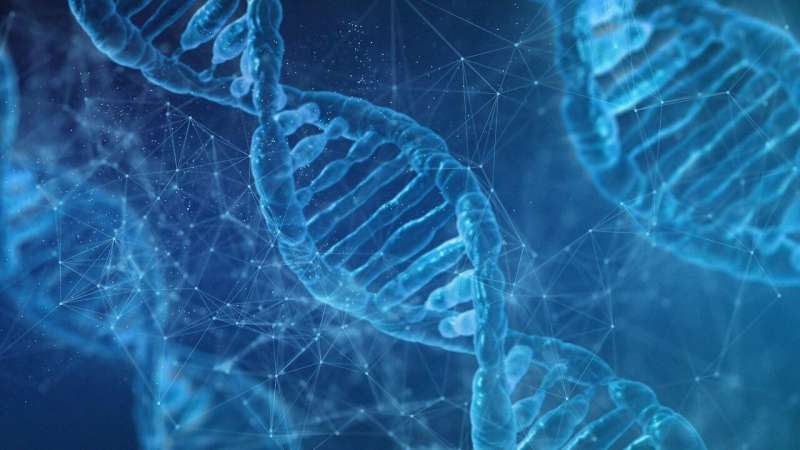This article has been reviewed according to Science X's editorial process and policies. Editors have highlighted the following attributes while ensuring the content's credibility:
fact-checked
peer-reviewed publication
trusted source
proofread
Researchers reveal mechanism of protection against breast and ovarian cancer

In a new paper published today in Nature, researchers at the Francis Crick Institute have outlined the structure and function of a protein complex that is required to repair damaged DNA and protect against cancer.
Every time a cell replicates, mistakes can happen in the form of mutations, but specialized proteins exist to repair the damaged DNA.
People with mutations in a DNA repair protein called BRCA2 are predisposed to breast, ovarian and prostate cancers, which often develop at a young age. In the clinic, these cancers are treated with a drug that inhibits PARP, another protein needed for DNA repair.
Recent work shows that defects in several other proteins can cause inheritable breast and ovarian cancers or Fanconi anemia, a blood disorder that can lead to different cancers, including leukemia.
The researchers used cryo-electron microscopy to reveal the atomic structure of four of these proteins, which come together to form a complex called BCDX2. This allowed them to map mutations associated with cancer on the 3D structure, revealing the important regions of the complex, and why certain mutations prevent DNA repair, leading to an instability in a person's genes and cancer.
In addition, the researchers discovered BCDX2's role in the cell, finding that it acts as a "molecular chaperone"—it helps target another protein called RAD51, causing it to recognize and assemble at regions where DNA repair needs to take place. Together, BRCA2, BCDX2 and RAD51 are the main players in the process that repairs damaged DNA—called "homologous recombination."
The research shows that BCDX2 is just as important for repairing DNA as BRCA2, suggesting mutations should also be routinely screened for.
Luke Greenhough, co-first author and postdoctoral research assistant at the Crick, said, "For the first time, we've been able to show the direct links between structure, function and why mutations in any of the components of BCDX2 leads to cancer. We now understand its crucial role in DNA repair, which explains why mutations can lead to cancer."
Eric Liang, co-first author and postdoctoral fellow at the Crick, said, "Just five years ago we wouldn't have been able to do this—the rapid advance of technology has made this research possible. DeepMind's AlphaFold2 (a computer program which can predict a protein's 3D structure), cryo-EM and high-resolution imaging techniques allowed us to gather the full picture of structure and function for this key protein complex. It was a very collaborative project, spanning multiple labs and technical teams across the Crick."
The research today could help inform the best line of treatment for people living with cancer.
Steve West, group leader of the DNA Recombination and Repair Laboratory at the Crick, said, "BRCA2 is well characterized and known to increase the risk of cancer, especially breast and ovarian cancers. It's mutated in 15%–20% of inheritable cancer cases so is regularly screened for.
"Our research has shown that BCDX2 is also crucial for DNA repair and acts in the same pathway as BRCA2. For people with cancers caused by defects in BCDX2, PARP inhibitors are also likely to be effective. Our findings suggest that people with a family history of these cancers should be screened for mutations in the proteins making up BCDX2 to get a full picture of their risk."
The researchers are now hoping to shed light on another protein complex, CX3, which is also involved in cancer. Putting all these insights together will allow a better understanding of genes which put people at a greater risk of cancer and help with targeted treatment.
More information: Stephen West, Structure and function of the RAD51B-RAD51C-RAD51D-XRCC2 tumour suppressor complex, Nature (2023). DOI: 10.1038/s41586-023-06179-1. www.nature.com/articles/s41586-023-06179-1



















